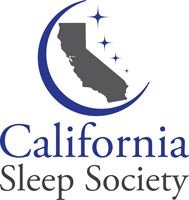By: William Hart, MD, FAASM
Dreams are a personal and difficult (if not impossible) experience to measure and interpret. For some, dreams are ghost-like impressions of the passage through each night’s sleep. Others will be very detailed about a dreaming experience. But for the majority, dreams are a fuzzy, blurry experience, most often remembered when associated with negative or positive impressions.
Recent advances in sleep science and dream research suggest that we are on the cusp of change. Dream analysis and a view of dreams is becoming a reality. Perhaps dreams are like the measure and view of black holes in astronomy. So far, so distant that we have to use their outlines to peer at these hard-to-grasp phenomena.
A recently published paper in the journal Social Cognitive and Affective Neuroscience (1) reported on the relationship between the amplitude of frontal theta activity in REM sleep and the incorporation of recent waking-life experiences. These researchers woke patients from REM and slow wave sleep (SWS) to obtain dream reports and compared them to reports of daily activity. These researchers were able to show a significant correlation of daytime events and experiences and the presence of frontal theta activity in a select group of subjects who were awoken during REM sleep. High intensity emotional content experiences were incorporated into dreams whereas low intensity experiences were not. There were no correlations with older experiences or with reports obtained during SWS.
These results suggest that the formation of wakefulness-related dream content is associated with REM theta activity and accords with theories that REM sleep is important for memory consolidation. I interpret the importance of this research as a method to begin understanding how dreaming incorporates day to day memory processing and that recent memories are being processed or perhaps expressed during REM sleep. These researchers suggest this correlation is not seen in SWS.
The authors claim that this is the first study to link an EEG pattern (frontal theta activity) with a form of dream content (recent experience). The relationship was specific to REM sleep and specific to recent experience and absent during SWS and for more distant events. They feel that it is this specific type of brain activity during REM that is important to memory consolidation. Methods for increasing the amplitude of frontal theta activity during REM may improve memory consolidation for recent events. At the same time, medications or sleep disorders that decrease theta in REM may lead to memory loss.
Identifying when dreaming is occurring and using a background of prior activities is a start in studying dreams using this EEG biomarker. It is hoped that my cursory review of this topic will pique the curiosity of the reader to keep on the lookout for more research in dreaming.
I look forward to the developments in this area and I suggest it will be part of sleep practice in the not-so-distant future.
- Eichenlaub, J., Van Rijn, E., Gaskell, M., Lewis, P., Maby, E., Malinowski, J., . . . Blagrove, M. (2018). Incorporation of recent waking-life experiences in dreams correlates with frontal theta activity in REM sleep. Social Cognitive and Affective Neuroscience, 13(6), 637-647.
William T. Hart MD
Adjunct Associate Professor
Stanford School of Medicine
Sutter Bay Sleep Disorders Center

